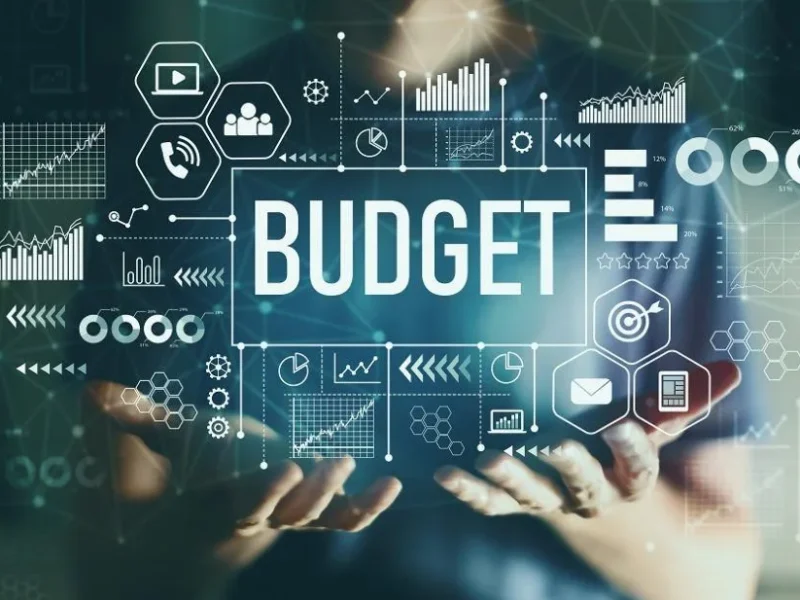With the TJMM Budget, you can maximize your finances like an expert.
Managing personal finances can occasionally feel like traversing a difficult maze in today’s fast-paced world.
However, financial freedom and stability are within reach for everyone with the right tools and mindset.
Enter the TJMM Budget, a powerful budgeting approach that has been gaining popularity for its simplicity and effectiveness.
In this article, we will explore the TJMM Budget and how it can help you take charge of your finances, paving the way toward a secure and prosperous future.
What is the TJMM Budget?
The TJMM Budget is a budgeting method designed to bring clarity and discipline to your financial life.
The name itself stands for “Track, Justify, Minimize, and Maximize,” representing the core principles of this approach.
It provides a structured framework that allows individuals to understand their spending patterns, make informed decisions, and optimize their financial resources.

The Four Pillars of the TJMM Budget:
Track
The first step in the TJMM Budget is to diligently track your expenses. This involves maintaining a detailed record of every penny you spend, whether on essential bills, daily indulgences, or unexpected splurges. Tracking your expenses provides valuable insights into your spending habits and helps identify areas where you might overspend.
Several user-friendly mobile apps and budgeting software make expense tracking convenient, allowing you to categorize your expenses and visualize your financial data effortlessly.
Justify
Once you have a comprehensive record of your spending, it’s time to evaluate each expense critically. Ask yourself: Is this expense necessary? Does it align with my financial goals? Can I find more cost-effective alternatives?
By justifying your expenses, you can eliminate or reduce non-essential spending, freeing up money that can be redirected toward your savings or investments.
Minimize
The “Minimize” pillar of the TJMM Budget encourages prudent spending without compromising your quality of life. It entails seeking ways to cut costs and adopting frugal practices in areas where it makes sense.
For instance, you can explore discounts, negotiate better rates for services, or reduce impulse purchases. Minor adjustments in spending habits can have a significant cumulative impact over time.
Maximize
The final pillar, “Maximize,” is about optimizing your savings and investment strategies. Establish specific financial objectives, such as setting aside money for a retirement, vacation, or emergency fund. Consistently devote a percentage of your moneyto achieving these objectives.
In order to maximize your savings, you should also look into investing alternatives that fit your risk profile and long-term goals. Compound interest and smart investment decisions can accelerate wealth accumulation.
Setting a realistic budget
Now that you have a clear understanding of your financial goals and current situation, it’s time to create a budget that works for you. The key to successful budgeting is setting realistic expectations and being honest with yourself about your spending habits.
Sort your spending into fixed and variable categories to start. As an example, rent, utilities, and insurance are examples of fixed expenses that are constant month after month. Variable expenses are more flexible and can include groceries, dining out, and entertainment. Be sure to include savings and debt repayment as categories in your budget as well.
When allocating funds to each category, be realistic about your spending habits. Look at your past bank statements and receipts to get a sense of how much you spend in each category. This will help you set more accurate budget limits and avoid overspending.
Tracking your expenses
A key component of budgeting is keeping track of your spending. It allows you to see where your money is going and identify areas where you can cut back or make changes. You can use several methods to track your expenses, from traditional pen-and-paper methods to budgeting apps and online tools.
The envelope system, which involves allocating a specific sum of money to each category and putting it in envelopes with labels, is one well-liked technique. You can no longer make purchases in a category until the next budget month once the money in an envelope has been used up.
If you prefer a digital approach, there are many budgeting apps available that can automatically track your expenses by linking to your bank accounts and credit cards. You can keep on track with your budgeting objectives by using these applications, which can offer real-time insights into your spending patterns.
Conclusion
Incorporating the TJMM Budget into your financial journey can be a transformative experience. You can achieve financial balance and security by diligently tracking your expenses, justifying every spending decision, minimizing non-essential costs, and maximizing your savings and investments.
Remember, the TJMM Budget is not about restriction or deprivation. It’s a comprehensive method of money management that gives you the capacity to take charge of your finances and make wise decisions. By embracing these principles, you will be on the path to achieving your financial dreams and turning them into reality.
So, take the first step today and embark on your journey toward financial freedom with the TJMM Budget as your trusted companion. Let’s make smart financial decisions together and create a brighter and more prosperous future!
Read Also:






